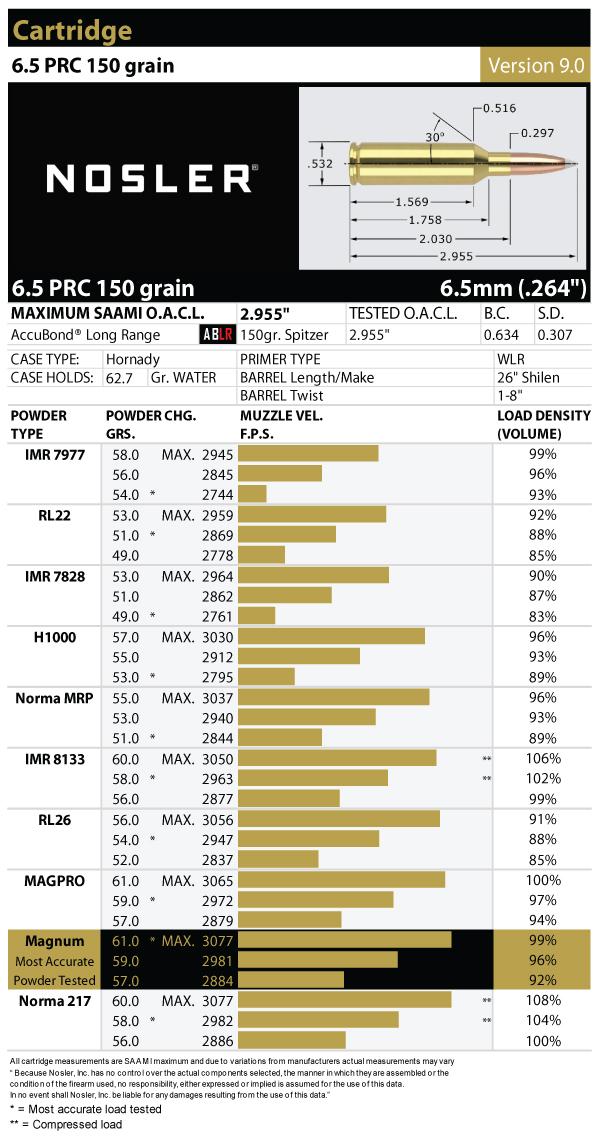

These include the Hodgdon 2017 Annual Manual, Nosler Reloading Guide 8, Hornady Handbook of Cartridge Reloading (10th edition) and Lyman Reloading Handbook (49th edition). I used four sources for the examples presented in this article. (See Efficient and Inefficient Reloading Powders for a fuller discussion of powder efficiency over a range of rifle and pistol calibers.) One could load 161 rounds from a pound of the efficient powder, but only 143 loads per pound of the inefficient powder. 150 grain bullet table, 43.3 grains of the most efficient powder yields 2700 fps MV, while 48.9 grains of the least efficient powder are needed to achieve the same MV. This means more loads per pound of powder can be produced. In other cases, a more efficient powder will use a smaller charge to achieve a given MV. In this case, the difference is manifested by the most efficient load getting 2997 fps MV from 46 grains of powder, while the least efficient load gets 2842 fps from 47 grains, a 5.4 percent difference in velocity from similar amounts of powder. 150 grain bullet table, the most efficient powder generates 65.2 fps MV per grain of powder (for the maximum load), while the least efficient powder gets 60.1 fps per grain. I measure powder efficiency by calculating the MV per grain of powder used. In other words, there is often a tradeoff between maximum velocity and best accuracy. This suggests that the most accurate loads for some rifle cartridge / bullet weight combinations may be with charge weights well below the maximum charge. The four grains below maximum loads generally were between eight and nine percent below the maximum powder charges of the respective loads. Similar patterns may be found for other cartridges and bullet weights in the Nosler tables. The powder that gave the best overall accuracy ranked fifth in maximum MV of the 11 powders, 110 fps below the maximum velocity of the strongest powder. Two powders got best accuracy with charges 2 grains below maximum, while the remaining seven were most accurate with charges 4 grains below maximum. It shows load data for 11 powders, only two of which gave best accuracy with a maximum charge weight, according to Nosler tests. 308 Winchester loads with a 150 grain bullet is an example. (Nosler handgun load tables show the same, except the reduced charges are generally 0.5 and 1.0 grains below maximum.) In addition, Nosler notes the charge weight of each powder that gave the best accuracy in their testing, and the powder that gave the best overall accuracy.
#Accurate 5 load data plus
The tables for rifle cartridges show the MVs attained by a maximum charge of several powders, plus velocities yielded by charges 2 and 4 grains below the maximum, for various Nosler bullet weights.

The Nosler Reloading Guide data tables are organized in a manner that illustrates the first situation listed above. Studying load data from at least two or three sources can be helpful in discerning and dealing with any of these situations. (4) There may be anomalies in the data for particular loads (rare, but it does happen). (3) Some load tables may be conservative (or optimistic) regarding maximum MVs attainable. (2) Some powders are markedly more efficient than others. (1) The powder and charge weight that gets the absolute maximum MV may not be the most accurate. There are four basic considerations that lead me to advocate checking two or more sources of data on any load. One may wonder why I recommend checking multiple sources before settling on a load recipe, for it would be simpler to choose one source and go with it, thereby avoiding potential confusion. How much variation is there among load recipes for particular cartridges and bullets? Sometimes not much, but usually enough that the reloader may be left somewhat uncertain about which recipe is best. This is not a no-brainer, because load tables from different sources typically show different results with the same powder. There are several parameters to be considered, the most obvious of which is comparison of the maximum muzzle velocities (MV) achieved by alternative powders. Anyone preparing to develop a new reload for a rifle or handgun cartridge should generally consult two or more load data sources before committing to a particular recipe for the cartridge and bullet in question.


 0 kommentar(er)
0 kommentar(er)
